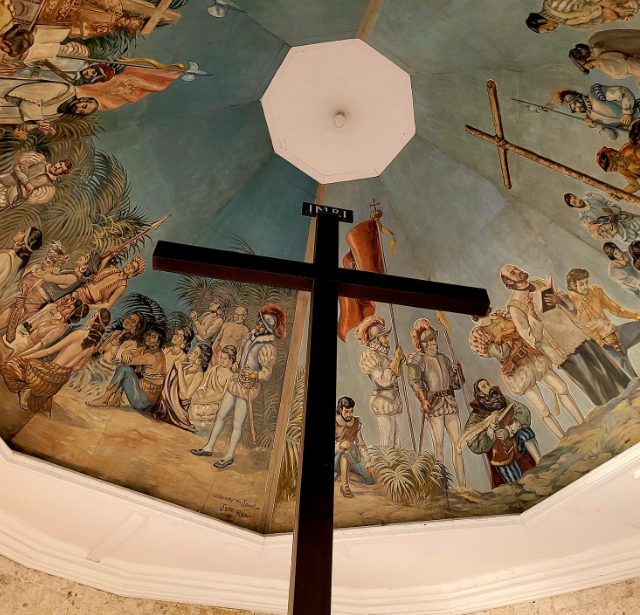
Introduction to Cebu City Travel Guide
Cebu City, often called the “Queen City of the South,” is a vibrant destination rich in history, culture, and adventure. From Spanish-era landmarks to pristine beaches, delicious cuisine, and thrilling outdoor activities, this Cebu City Travel Guide will help every traveler explore its best offerings.
Best Time to Visit Cebu City
The ideal time to visit Cebu is during the dry season from December to May when the weather is sunny and perfect for sightseeing and beach trips. January is particularly exciting due to the Sinulog Festival, a grand celebration honoring the Santo Niño.

How to Get to Cebu City
- By Air: Mactan-Cebu International Airport (MCIA) serves domestic and international flights.
- By Sea: Several ferry services connect Cebu with other islands like Bohol, Leyte, and Mindanao.
Where to Stay in Cebu City
- Budget Hotels: Red Planet Cebu, ABC Hotel Cebu
- Mid-Range Accommodations: Quest Hotel, Bayfront Hotel
- Luxury Resorts: Shangri-La’s Mactan Resort, Crimson Resort & Spa

Top Attractions in Cebu City
- Magellan’s Cross – A historic landmark marking the arrival of Christianity.
- Basilica Minore del Santo Niño – The oldest Catholic church in the Philippines.
- Fort San Pedro – A Spanish colonial fort offering a glimpse of Cebu’s past.
- Cebu Taoist Temple – A peaceful sanctuary with stunning city views.
- Temple of Leah – Cebu’s version of the Taj Mahal, built as a symbol of love.
- Sirao Flower Garden – The “Little Amsterdam” of Cebu, perfect for Instagram-worthy shots.

Best Beaches Near Cebu City
- Mactan Island – Easily accessible for a quick beach escape.
- Nalusuan Island – Great for snorkeling and marine life encounters.
- Camotes Islands – A serene paradise with white sand beaches and caves.
Outdoor Adventures in Cebu
- Kawasan Falls Canyoneering – An adrenaline-pumping activity.
- Osmeña Peak Hiking – The highest peak in Cebu with panoramic views.
- Sardine Run in Moalboal – Swim with millions of sardines.
- Whale Shark Watching in Oslob – A bucket-list experience.
Cebu City Travel Guide: Food Scene and What to Eat
- Lechon Cebu – The best roasted pig in the Philippines.
- Puso (Hanging Rice) – A Cebuano dining staple.
- Pochero – A delicious beef stew.
- Danggit – Dried fish, perfect with garlic rice.
- SuTuKil Experience – A must-try seafood feast.
Shopping in Cebu City
- Ayala Center Cebu – A premier shopping mall with high-end brands and local boutiques.
- SM Seaside City Cebu – One of the largest malls in the Philippines with dining, shopping, and entertainment.
- Taboan Public Market – The best place to buy dried fish and other local delicacies.
- Carbon Market – A bustling market where you can find fresh produce, souvenirs, and street food.
Nightlife in Cebu City
- Mango Avenue Bars & Clubs – The go-to party district for nightlife lovers.
- IT Park Hangout Spots – A modern area filled with restaurants, cafes, and lounges.
- Rooftop Bars with City Views – Enjoy a drink while overlooking the city skyline.
Transportation Guide: Getting Around Cebu City
- Jeepneys & Buses: The cheapest way to travel within the city.
- Taxis & Grab: Convenient options for tourists.
- Motorbikes & Scooters: Ideal for exploring off-the-beaten-path locations.
Final Thoughts on Cebu City Travel Guide
Cebu City is a mix of history, adventure, and relaxation, making it a top destination in the Philippines. Whether you’re a beach lover, a foodie, or a culture enthusiast, this Cebu City Travel Guide ensures you get the most out of your trip.
FAQs About Cebu City Travel Guide
- Is Cebu City expensive to visit? – No, Cebu offers budget-friendly and luxury options.
- How many days do I need in Cebu City? – At least 3-5 days to explore the highlights.
- Do people in Cebu speak English? – Yes, English is widely spoken.
- What’s the best mode of transport in Cebu City? – Taxis and Grab for convenience; jeepneys for budget travelers.
- Can I visit Cebu City during the rainy season? – Yes, but outdoor activities might be limited.
You might be also interested to explore the whole Cebu Province and Cebu city transportation
Table of Contents
Giovanni Carlo P. Bagayas is a seasoned travel guide and passionate explorer from the Philippines. With years of experience uncovering the hidden gems of his homeland, Giovanni has dedicated his career to showcasing the beauty, culture, and adventure that the Philippines has to offer. As the author of Best Philippines Travel Guide, he combines his expertise and love for travel to provide insightful tips, detailed itineraries, and captivating stories for travelers seeking unforgettable experiences in the Philippines. Giovanni’s mission is to inspire wanderlust and help visitors discover the true essence of his vibrant country.
